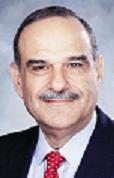Half Its Former Size?
By Adam Nossiter for the New York Times:
The empty streets, deserted avenues and abandoned houses prompt a gnawing question: Is this what New Orleans has come to — a city half its old size?
Over and over, the city’s leaders reassure citizens that better days and, above all, more people are in the future. Their destiny will not merely be to reside in a smaller city with a few good restaurants and curious local customs, the citizens are told.
But some economists and demographers are beginning to wonder whether New Orleans will top out at about half its prestorm population of about 444,000, already in a steep decline from its peak of 627,525 in the 1960 Census. At the moment, the population is well below half, and future gains are likely to be small.
“It will be a trickle based on what we know now,” said Elliott Stonecipher, a consultant and demographer based in Shreveport, La. “Low tens of thousands, over three or four or five years, something in that range. I would say we could start losing people, especially if the crime problem doesn’t get high visibility.”
The new doubts, surprisingly, are largely not based on the widespread damage caused by the flood. Rather, crippling problems that existed long before Hurricane Katrina are mostly being blamed for the city’s failure to thrive.
In this view, the storm was merely a grim exclamation point to conditions decades in the making. Before the storm, some economists say, New Orleans may have had more people than its economy could support, and the stalled repopulation is merely reflecting that.
Hurricane Katrina may have brutally recalibrated the city’s demographics, setting New Orleans firmly on the path its underlying characteristics had already been leading it down: a city losing people at the rate of perhaps 1.5 percent a year before Hurricane Katrina, with a stagnant economy, more than a quarter of the population living in poverty, and a staggeringly high rate of unemployment, in which as many as one in five were jobless or not seeking work.
Political leaders, worried about the loss of clout and a Congressional seat, press for people to return, but a smaller New Orleans may not be bad, some economists say. Most of those who have not returned — 175,000, by Mr. Stonecipher’s count — are very poor, and can be more easily absorbed in places with vibrant job markets, they say.
The empty streets, deserted avenues and abandoned houses prompt a gnawing question: Is this what New Orleans has come to — a city half its old size?
Over and over, the city’s leaders reassure citizens that better days and, above all, more people are in the future. Their destiny will not merely be to reside in a smaller city with a few good restaurants and curious local customs, the citizens are told.
But some economists and demographers are beginning to wonder whether New Orleans will top out at about half its prestorm population of about 444,000, already in a steep decline from its peak of 627,525 in the 1960 Census. At the moment, the population is well below half, and future gains are likely to be small.
“It will be a trickle based on what we know now,” said Elliott Stonecipher, a consultant and demographer based in Shreveport, La. “Low tens of thousands, over three or four or five years, something in that range. I would say we could start losing people, especially if the crime problem doesn’t get high visibility.”
The new doubts, surprisingly, are largely not based on the widespread damage caused by the flood. Rather, crippling problems that existed long before Hurricane Katrina are mostly being blamed for the city’s failure to thrive.
In this view, the storm was merely a grim exclamation point to conditions decades in the making. Before the storm, some economists say, New Orleans may have had more people than its economy could support, and the stalled repopulation is merely reflecting that.
Hurricane Katrina may have brutally recalibrated the city’s demographics, setting New Orleans firmly on the path its underlying characteristics had already been leading it down: a city losing people at the rate of perhaps 1.5 percent a year before Hurricane Katrina, with a stagnant economy, more than a quarter of the population living in poverty, and a staggeringly high rate of unemployment, in which as many as one in five were jobless or not seeking work.
Political leaders, worried about the loss of clout and a Congressional seat, press for people to return, but a smaller New Orleans may not be bad, some economists say. Most of those who have not returned — 175,000, by Mr. Stonecipher’s count — are very poor, and can be more easily absorbed in places with vibrant job markets, they say.





0 Comments:
Post a Comment
<< Home